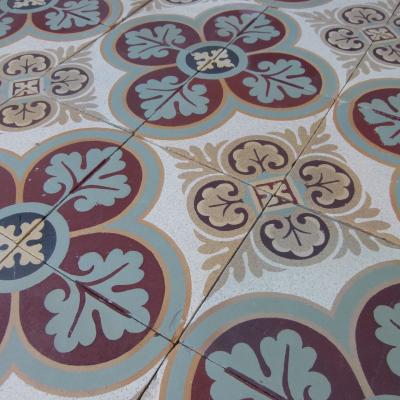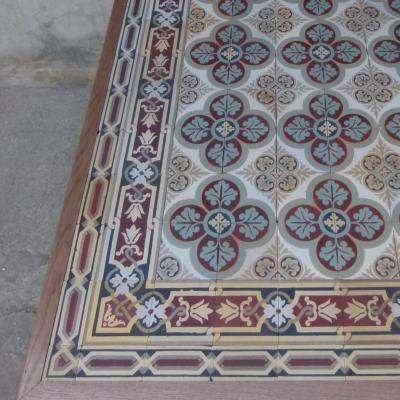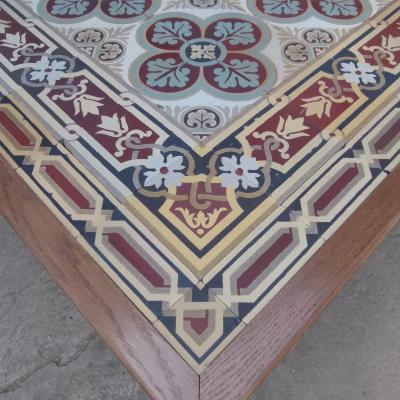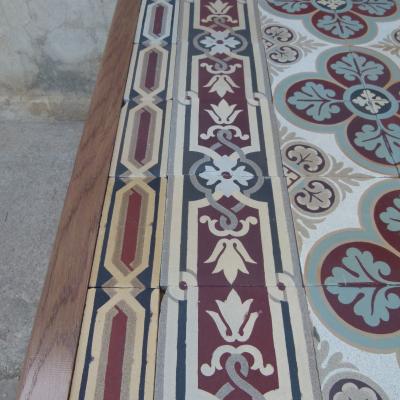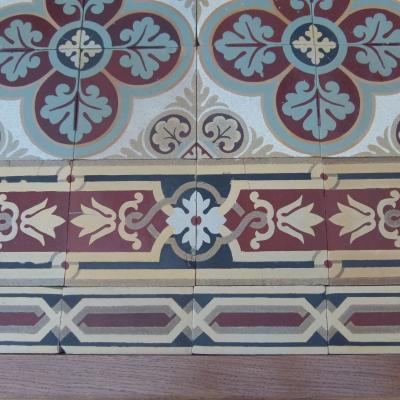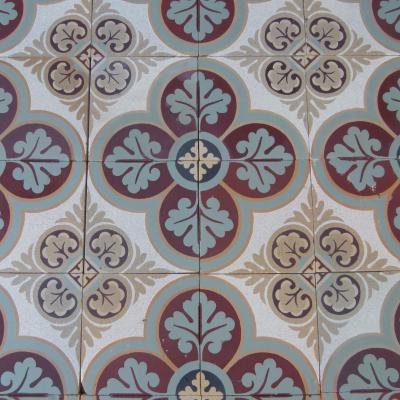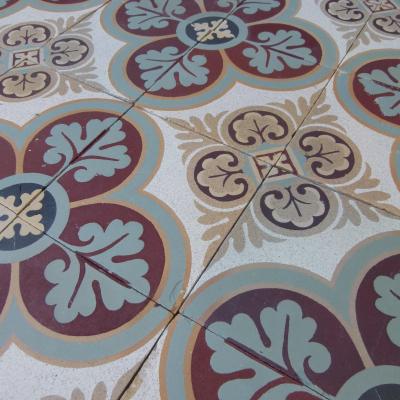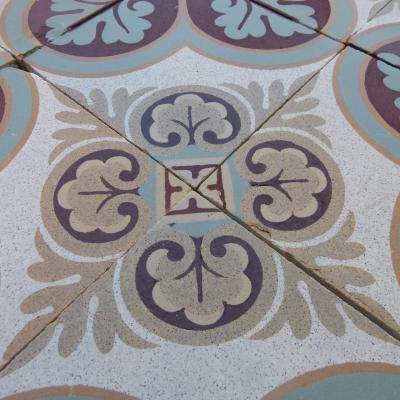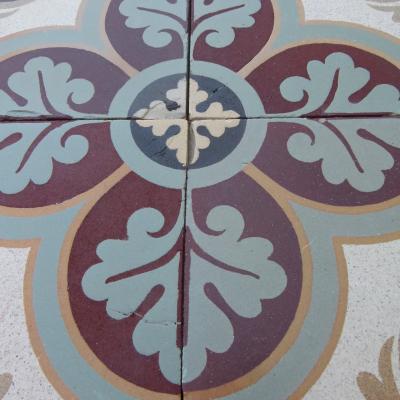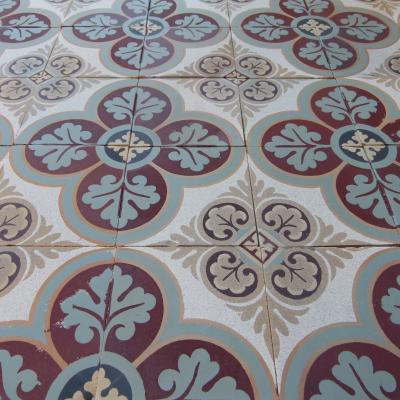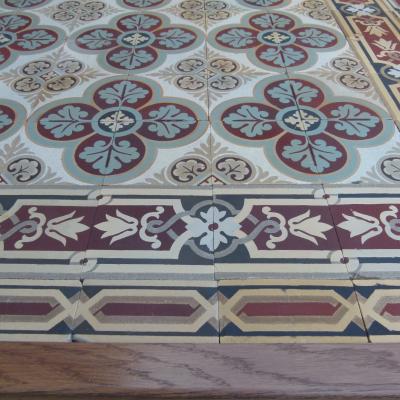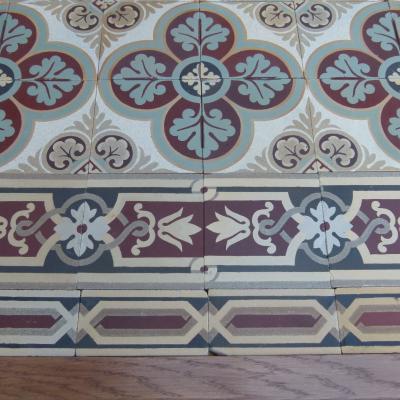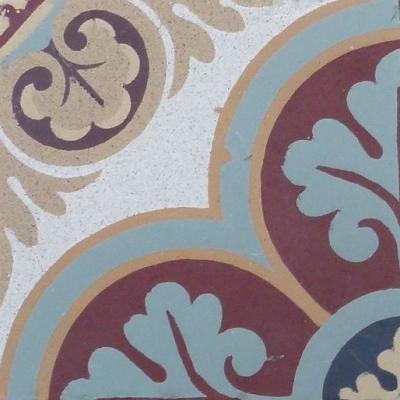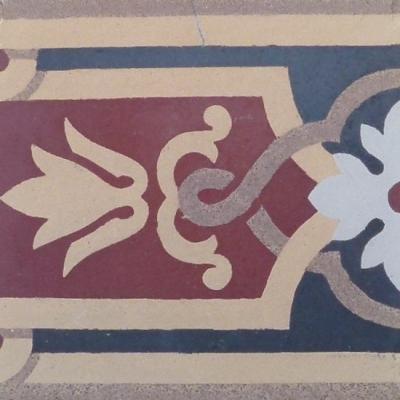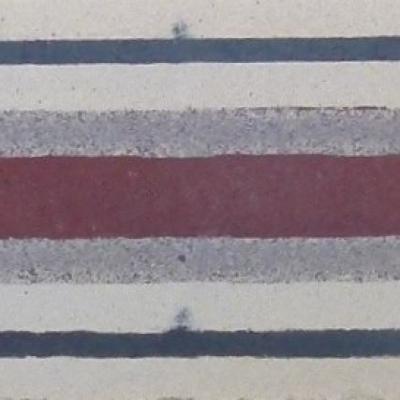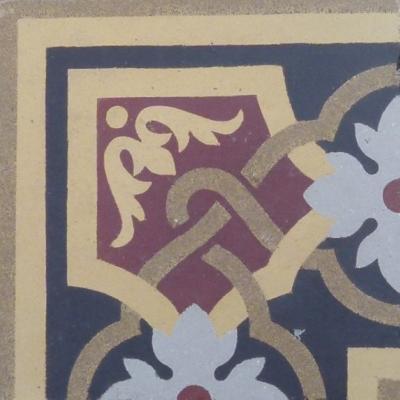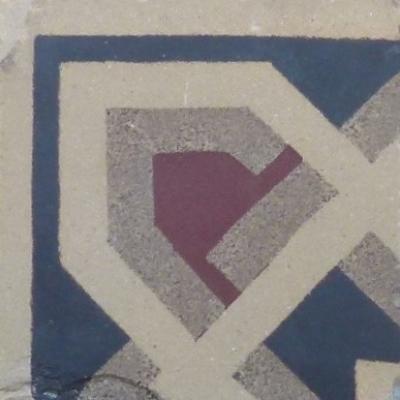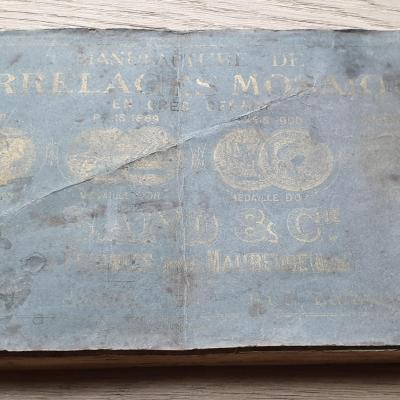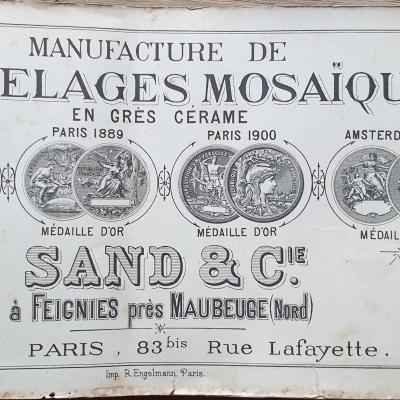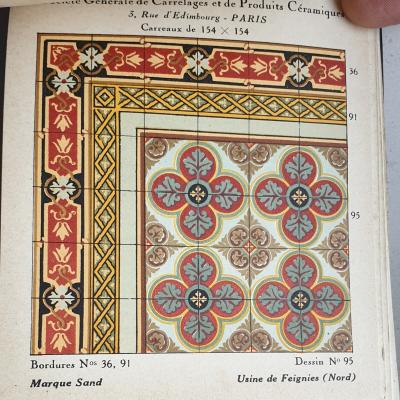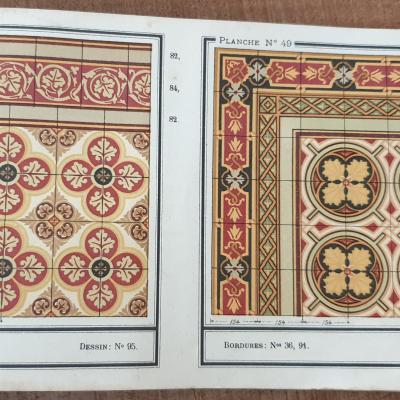A Sand & Cie French ceramic with double borders - c.1900-1905
Manufactured by the multiple gold medal award winning ceramic house of Carrelages Mosaiques Sand & Cie, Feignes, pre de Maubeuge, France, a period ceramic floor, dating c.1900-1905, consisting of 15cm sq field and border tiles and a half size 15cm x 7.5cm border.
The floor totals 7m2 / 75 sq ft.
Arriving ready to re-lay, the floor has restored beautifully of its old mortar and years of engrained dirt and wax, now revealing crisp colours on a quality 15mm thick ceramic. Owing to the tiles being handmade in small batches there is tonal variation in slip colours, most notably on the large and small borders.
We present in the photo gallery a randomly selected c.1m2 section of the restored floor along with scans from the period Sand & Cie catalogue in our possession showing the tiles.
As can be seen in the high resolution photographs some tiles display edge nibbles and there are the occasional small groutable chips on a small number of tiles. In addition to the number of tiles by tile type detailed below we also include some free tile rejects with the floor to use as offcuts by the tiler or to be simply integrated into the floor lay and grouted in to deliver a richer antique floor patina. The choice is yours. Of these free tiles there are 23 field tiles, 15 large borders and 8 small borders.
We have recovered three of each of the large and small border corner tiles but the missing one for each border series can easily be mitre cut by a tiler from the regular borders.
Tile quantities, give or take one or two:-
FIELD – 230 tiles – 5.2m2 / 56 sq ft
LARGE BORDERS - 45 tiles plus 3 corners – 1.1m2 / 11.9 sq ft. – 7.2 linear metres / 23.6 linear ft.
SMALL BORDERS - 60 tiles plus 3 corners – 0.7m2 / 7.5 sq ft. – 9.2 linear metres / 30.2 linear ft.
Plus free tile rejects as detailed.
NOTE
Antique tiles were most commonly made in single or two tile moulds. Before current computer automation methods their moulds were made my hand and the colour slips mixed by eye. Kiln temperatures could also be variable, as could the firing time. The result is that often tiles display subtle size and thickness variations and there can be tonal variations in colours, owing to the slip mixing and/or firing time. All of this makes these handmade tiles unique and adds to their charm. Some floors display their subtle variations in size and tones, some not, but when photographing we always take a random section of the floor so that it is representative of the whole. A tiler should always dry lay a section of the tiles to familiarise himself with them before starting to fix lay.
CE305



